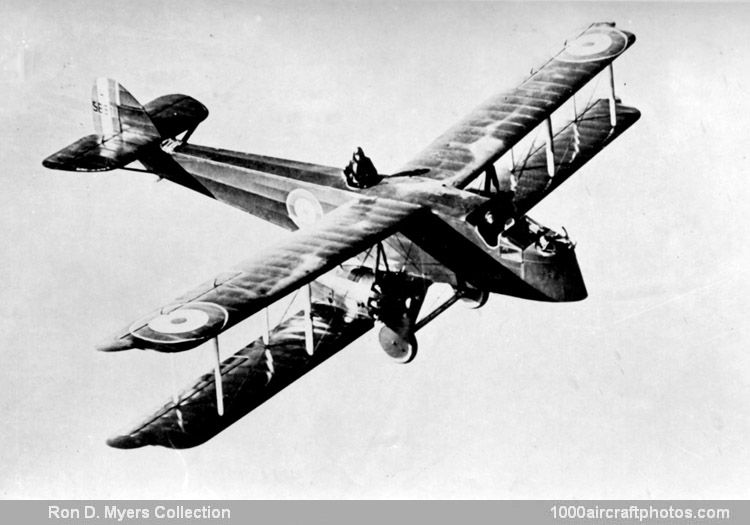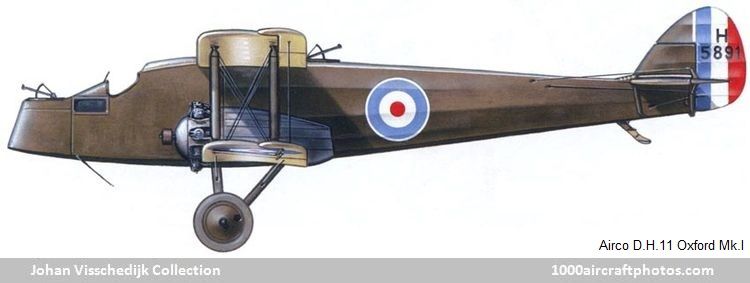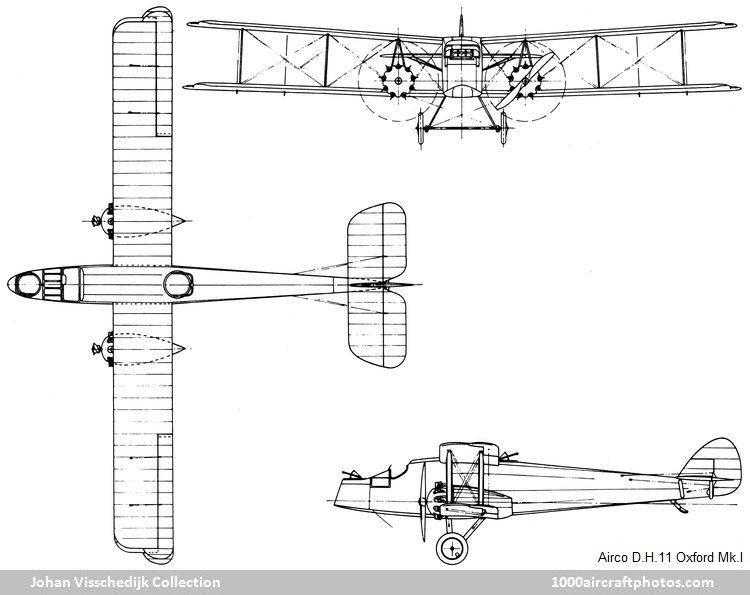08/31/2015. Remarks by Johan Visschedijk: "In 1918 the Air Ministry asked the Aircraft Manufacturing Co. (Airco) to build a long-range day bomber, presumably with a view to providing an ultimate replacement for the D.H.10. The type number D.H.11 was allotted to the new design, which was completely different from any of its predecessors and displayed great originality of thought. Construction was hardly begun when the Armistice was signed, and the uncertainties of the ensuing period, coupled with the lack of any urgency, delayed the machine's completion until early 1920. The name Oxford was officially bestowed on the D.H.11, but did not survive and is little known.
The D.H.11 was a three-bay biplane powered by two 320 hp A.B.C. Dragonfly radial engines mounted on the lower wings. The fuselage was very deep and completely filled the gap between the wings. This arrangement gave the rear gunner a superb field of fire in all upwards directions, for he was wholly above the wings. The front and rear gunners' cockpits were connected by a catwalk which led past the pilot's seat and under the fuel tanks: these were slung from the top of the fuselage. The machine stood high on the ground, and access to the fuselage was gained by a trapdoor situated between the spars of the lower wing.
A remarkable structural feature of the D.H.11 was the use of a simple V-landing gear generally similar to the type found on most contemporary single-engined aircraft. This must have led to a number of complications concerning the engines and lower center section. The wings were conventional in appearance and construction, but the upper mainplanes had a greater dihedral angle than the lower. Balanced ailerons were fitted. The tail unit was of typical de Havilland outline, and the tail plane was braced to the lower longerons by faired steel tubes.


